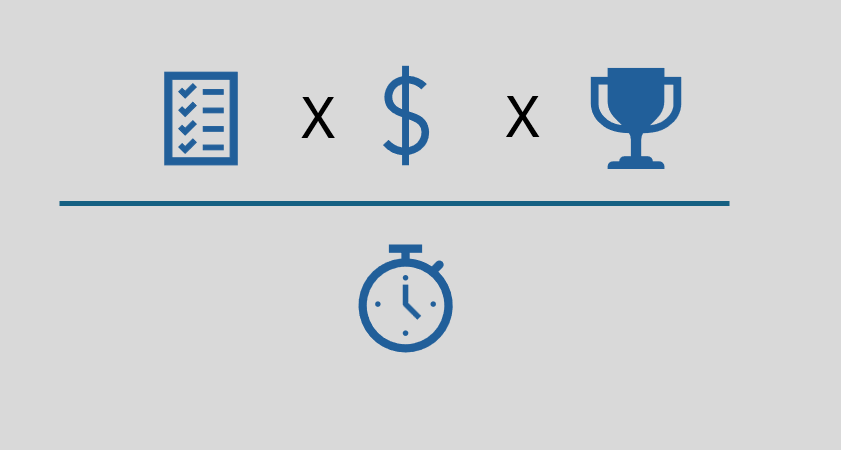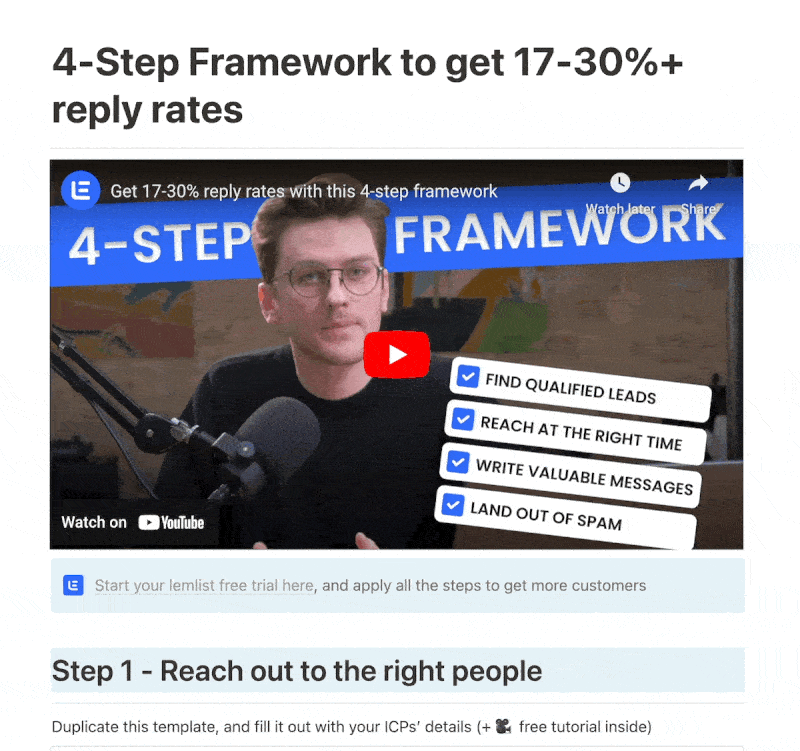In any race, you typically track your progress by beating your time marks.
In business, you can also track how fast you make money.
This business stopwatch is called “sales velocity.”
Just as you’d want to reach the finish line first, businesses aim for higher sales velocity to earn cash quickly.
Find out why sales velocity matters, how to calculate it, and how you can increase it for your business growth.
What is sales velocity, and why does it matter?
Sales velocity indicates how rapidly a business makes sales, aka how quickly they earn money.
If you understand how fast your business is running (or, in this case, selling), you can make better decisions, such as how to speed up or where to invest more resources.
How to calculate sales velocity
Imagine you’re selling software.
To determine how fast you’re selling app seats (aka your sales velocity), consider these four pillars:
1. Opportunities
How many people are interested in buying your software?
This isn’t about everyone you meet but the ones genuinely considering a purchase.
2. Average deal size
When someone buys a plan, how much do they usually spend?
This number increases if they often buy more than one seat or pick the pricier plan.
3. Win rate
Out of 10 people showing interest, how many buy?
If 6 out of 10 purchase, your win rate is 60%.
4. Sales cycle duration
From the moment someone eyes your app to the point they buy it, how long does it typically take?
With these elements, sales velocity is calculated as:
(Number of Opportunities x Average Deal Size x Win Rate) ÷ Sales Cycle Duration

An example of calculating sales velocity
For example, if your
– Opportunities are 120 people
– Average deal size is $25
– Win rate is 50% or 0.50
– Sales cycle duration is 5 daysYou would calculate your sales velocity as (120 x $25 x 0.50) ÷ 5 = $300 per day
The result? You’re raking in $300 daily from your app sales.
4 tips to increase your sales velocity
To boost your sales velocity, you have to increase:
- Average deal size
Work on pushing lifetime deals or annual subscriptions rather than simply going for the smaller products.
- The number of opportunities
Qualify your leads effectively. If you’re targeting every single lead in sight, chances are you’re reducing your opportunities rather than increasing them, as your name will be associated with spam by all those people whom your product is not suited for.
By crafting your buyer persona and targeting only qualified leads, you’ll increase your opportunities.
- Conversion rate
In order to increase your conversion rate, you need to put in the work with your potential customers.
Make sure communication is clear and respectful and that you’re addressing your lead’s pain points accurately.
Another strategy you can implement to increase your conversion rate is a reward or incentive program, where your lead will see there’s something more for them. Think about a referral program, for example.
.. and shorten:
- Sales cycle length
Use sales automation to take time away from time-consuming tasks like outreach, follow-ups, etc.
Additionally, make sure you periodically check your sales funnels to spot any points of friction or any bottlenecks that may be slowing your sales cycle down. Asses how every step is working and make the necessary adjustments, whether this may be investing in automation tools, eliminating unnecessary steps, etc.
To help you out, we’re sharing the 4-step multichannel framework that will get you 17-30%+ reply rates!
It’s based on years of analysis of millions of emails and has helped over 20k+ users to book more meetings with their prospects.
In just a 45-min video, you’ll get how to reach out:
And get exclusive access to the only resource you need to get 17-30% reply rates, including:
→ 20+ criteria to build your ICP (+ template)
→ 20+ examples of buying intents
→ 33+ tools to use to find leads
→ 18+ sources for personalization
→ 28+ tips to keep your emails out of spam
→ 5+ outreach workflow examples
→ 1 GSheets script to boost lead gen efficiency

For free!
Don’t miss out on this opportunity to open new business opportunities & unlock 17-30% reply rates here!
Key takeaways
✅ Sales velocity doesn’t just measure sales but the rate at which they occur. Speed is the game-changer.
✅ Opportunities, average deal size, win rate, and sales cycle duration are the driving factors. Understand them, and you master your sales velocity.
✅ Knowing your sales velocity isn’t enough. Constantly aim to improve it – check out this 45-min pure value video & revolutionize your outreach!
So, next time you assess your sales performance, don’t just count the dollars. Measure how swiftly they come in and double down on things that speed up the process!
Your source of actionable outreach tips and strategies that will help you get replies and grow your business.

